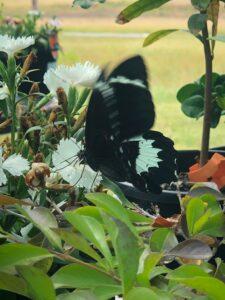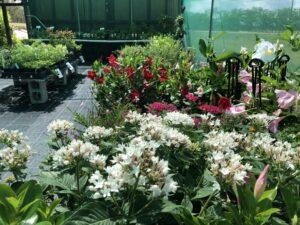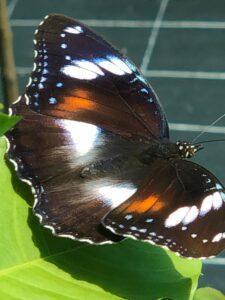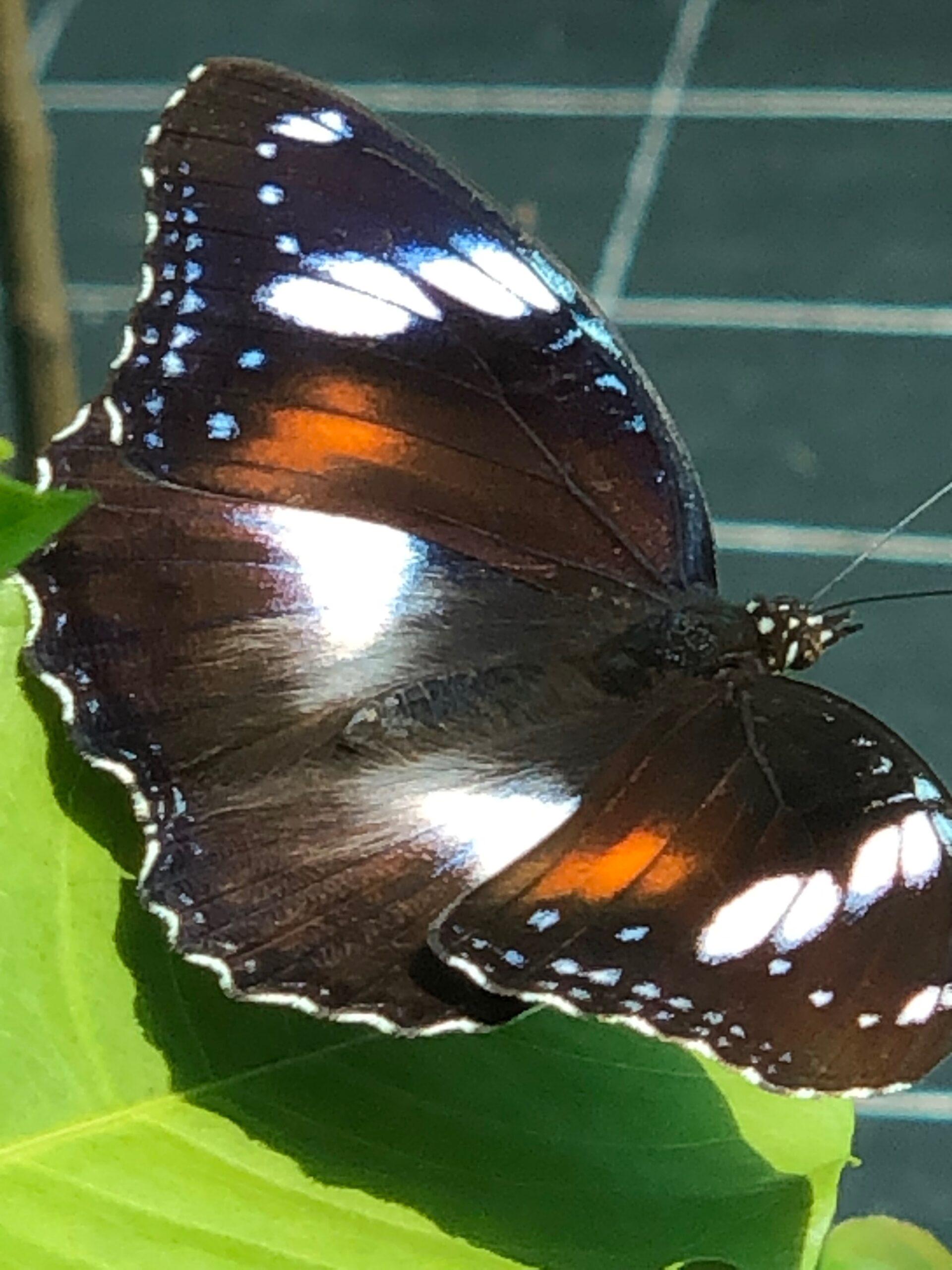Creating a Butterfly Garden provides habitat for important insects while adding beauty and enjoyment to our surroundings. Recently in my own garden I’ve been enjoying watching Butterflies feeding on flowers, especially Pentas and then landing on leaves to lay their eggs. It’s really fascinating to see. Some you’re likely to spot are the Swallowtail types, Common Crow, Blue Triangle, Blue Tiger, Caper White, Monarch/Wanderer, Eggfly, Migrant, Dart and Common Blue.
 Butterfly friendly gardening practices of providing a good variety of host and food plants will ensure we’ll continue to enjoy South Burnett’s butterflies into the future. Creating butterfly friendly gardens and restoring native habitats if you get the opportunity, are rewarding ways to appreciate butterflies. To garden for Butterflies choose a sunny position that receives at least six to eight hours of sunlight each day. Butterflies are ectothermic, meaning they rely on external heat sources to regulate their body temperature, so they need plenty of sunlight to stay warm and active. On sunny days you’ll notice them flying. Quite often while I’m working with my nursery plants I’ll get the camera out and capture their delicate beauty.
Butterfly friendly gardening practices of providing a good variety of host and food plants will ensure we’ll continue to enjoy South Burnett’s butterflies into the future. Creating butterfly friendly gardens and restoring native habitats if you get the opportunity, are rewarding ways to appreciate butterflies. To garden for Butterflies choose a sunny position that receives at least six to eight hours of sunlight each day. Butterflies are ectothermic, meaning they rely on external heat sources to regulate their body temperature, so they need plenty of sunlight to stay warm and active. On sunny days you’ll notice them flying. Quite often while I’m working with my nursery plants I’ll get the camera out and capture their delicate beauty.
Selecting a variety of nectar rich flowering plants will attract butterflies to your garden. Native species are important as well as Buddleja, Echinacea, Rudbeckia, Pentas, Verbena, Salvia, Zinnia, Plumbago, Lavender, Jasmine and more. In addition to nectar plants, include host plants that caterpillars can feed on. Different butterfly species have specific host plant requirements, for example, milkweed is the host plant for Monarch butterflies and the Richmond Birdwing, (vulnerable status in QLD) which would be amazing to introduce into this area, needs the host vine Pararistolochia praevenosa. When we moved here 20 years ago this beautiful Butterfly was close to the South Burnett and potentially with a decent corridor of vines and a concerted effort could be seen here too.
Like the other swallowtail Butterflies, the Dainty Swallowtail undergoes a complete metamorphosis, with four distinct stages: egg, caterpillar (larva), pupa (chrysalis) and adult butterfly. The female butterfly lays her eggs on the leaves of host plants, typically citrus, such as oranges, lemons, limes, madarin, kumquat, finger limes etc. The caterpillars feed on the leaves of these plants before pupating into chrysalises and emerging as adult butterflies. Incredible!
Butterflies need water to drink, so include a shallow dish or birdbath filled with clean water. Add a few small rocks or pebbles to provide perches for butterflies to land on while they drink. They also need need places to rest and bask in the sun. Include flat rocks, logs, or branches where they can perch and warm their wings. You can also plant shrubs or install trellises to provide shelter from wind and predators. Keep your butterfly garden healthy by regularly watering, weeding, and mulching. Deadhead spent flowers to encourage continuous blooming and prune back overgrown plants as needed.
Once your butterfly garden is established, spending time observing butterflies and other pollinators is such an enjoyable thing to do. It slows us down and helps us appreciate nature. Perhaps you could also record which species you see and when they are most active. With time, your butterfly garden will become a vibrant place for these beautiful insects and enjoyable for yourself.
 Yesterday I was quite surprised to see three Orchard Swallowtail caterpillars eating the leaves of a young crows ash tree. These are the caterpillars that resemble bird poo and then change to an olive green colour when older. I particularly love seeing the large Orchard Swallowtail (Papilio aegeus) Butterfly at Ramesa Nursery. It’s definitely my favourite and a wonderful pollinator insect feeding on nectar while flying from flower to flower transfering pollen between plants. Importantly the flowers will then be able to produce viable seed.
Yesterday I was quite surprised to see three Orchard Swallowtail caterpillars eating the leaves of a young crows ash tree. These are the caterpillars that resemble bird poo and then change to an olive green colour when older. I particularly love seeing the large Orchard Swallowtail (Papilio aegeus) Butterfly at Ramesa Nursery. It’s definitely my favourite and a wonderful pollinator insect feeding on nectar while flying from flower to flower transfering pollen between plants. Importantly the flowers will then be able to produce viable seed.
Happy Gardening everyone. Kind regards, Romaine
Image for article: Orchard Swallowtail Butterfly feeding on Jasmine
Credit: Romaine Undery, RAMESA Nursery, Kingaroy

